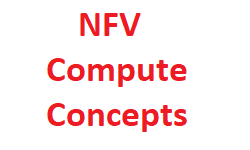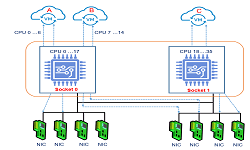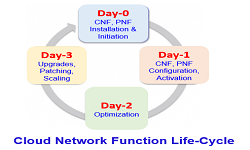Virtual Network’s Most Common Definitions
- Life Cycle Management (LCM) : LCM is a set of functions required to manage the instantiation, maintenance and termination of a Virtual Network Function (VNF) or Network Service (NS).
- Network Controller: Functional block that centralizes some or all of the control and management functionality of a network domain and may provide an abstract view of its domain to other functional blocks via well defined interfaces.
- Network Function: It is a functional block within a network infrastructure that has well-defined external interfaces and well-defined functional behavior.
- Network Functions Virtualization (NFV): NFV defines the principle of separating Network Functions from the hardware they run on by using virtual hardware abstraction.
- Network Functions Virtualization Orchestrator (NFVO) : Functional block that manages the Network Service lifecycle and coordinates the management of Network Service life cycle, Virtualised Network Function life cycle and NFV infrastructure to ensure an optimized allocation of the necessary resources and connectivity.
- Network Functions Virtualization Infrastructure (NFVI): Totality of all hardware and software components that build up the environment in which Virtualised Network Functions are deployed.
- Network Service Orchestration (NSO): NSO is a subset of Network Functions Virtualization Orchestrator functions that are responsible for Network Service life cycle management.
- Network Service Descriptor (NSD): NSD is a template that describes the deployment of a Network Service including service topology as well as Network Service characteristics such as Service Layer Agreements for the Network Service on-boarding and life cycle management of its instances.
- Network Service (NS): It is a composition of Network Functions and defined by its functional and behavioral specification.
- Quota: It is the upper limit on specific types of resources.
- Resource Orchestration: It is a subset of Network Functions Virtualisation Orchestrator functions that are responsible for global resource management governance.
- Service life Cycle: It is a set of phases for realizing a service from conception and identification to instantiation and retirement
- Software-Defined Networking (SDN): SDN is a set of techniques that enables to directly program, orchestrate, control and manage network resources, which facilitates the design, delivery and operation of network services in a dynamic and scalable manner.
- SDN Orchestration: It is a process that oversees and directs a set of software-defined networking activities and interactions with the objective of carrying out certain work in an automated manner.
- Virtualised Infrastructure Manager (VIM): It is a functional block that is responsible for controlling and managing the Network Functions Virtualisation Infrastructure compute, storage and network resources, usually within one operator’s Infrastructure Domain
- Virtualised Network Function (VNF): Implementation of an Network Function that can be deployed on a Network Function Virtualisation Infrastructure
- Virtualised Network Function Component (VNFc): Internal component of a Virtualised Network Function providing a defined sub-set of that Virtualised Network Function’s functionality
Related Posts:
- Network Function Virtualization (NFV) Architecture
- Virtual Network Function (VNF) Definition, Architecture and Design
- OpenStack, OpenStack Component and Its Deployment Models
- NFV Management and Orchestration [MANO] Key Performance Indicators [KPIs]



